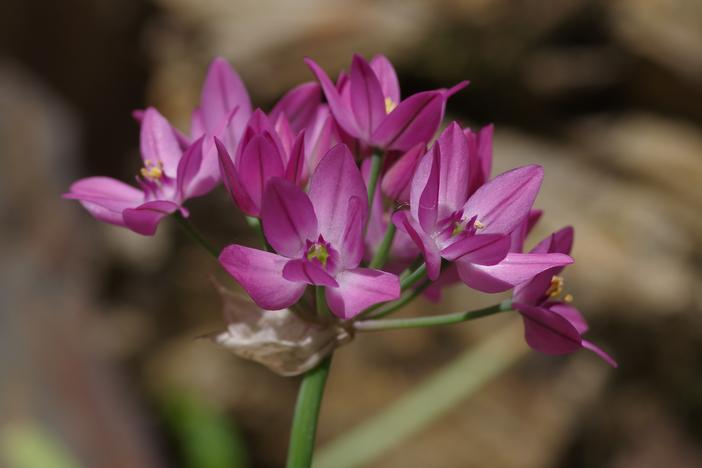Pink Lily Leek
(Allium oreophilum)
Pink Lily Leek (Allium oreophilum)
/
/

El Grafo
CC BY-SA 4.0
Image By:
El Grafo
Recorded By:
Copyright:
CC BY-SA 4.0
Copyright Notice:
Photo by: El Grafo | License Type: CC BY-SA 4.0 | License URL: https://creativecommons.org/licenses/by-sa/4.0 | Uploader: El Grafo | Publisher: Wikipedia Commons





















Estimated Native Range
Summary
Allium oreophilum, commonly known as Pink Lily Leek, is a deciduous perennial bulb native to rocky slopes and steppe regions in Central Asia, including the Caucasus. It typically grows to a height of 0.7-1 feet (0.2-0.3 meters) and a width of 0.1-0.3 feet (0.03-0.09 meters). The plant forms clumps of narrow, green leaves and produces showy clusters of star-shaped flowers in shades of pink and sometimes red, which bloom in late spring to early summer. The flowers are highly attractive to pollinators such as bees and butterflies.
Pink Lily Leek is valued for its ornamental flowers and is often used in rock gardens, borders, and as an underplanting for taller perennials or shrubs. It is also suitable for naturalizing in meadows or informal garden areas. This Allium species is relatively low-maintenance, requiring minimal care once established. It prefers full sun but can tolerate light shade and thrives in well-drained soil. Overwatering or poorly drained soils can lead to bulb rot. It is generally pest-resistant, although onion fly and thrips can sometimes be a problem. Allium oreophilum is not known to be invasive and does not have aggressive roots, making it a safe choice for most garden settings.CC BY-SA 4.0
Pink Lily Leek is valued for its ornamental flowers and is often used in rock gardens, borders, and as an underplanting for taller perennials or shrubs. It is also suitable for naturalizing in meadows or informal garden areas. This Allium species is relatively low-maintenance, requiring minimal care once established. It prefers full sun but can tolerate light shade and thrives in well-drained soil. Overwatering or poorly drained soils can lead to bulb rot. It is generally pest-resistant, although onion fly and thrips can sometimes be a problem. Allium oreophilum is not known to be invasive and does not have aggressive roots, making it a safe choice for most garden settings.CC BY-SA 4.0
Plant Description
- Plant Type: Bulb
- Height: 0.7-1 feet
- Width: 0.1-0.3 feet
- Growth Rate: Moderate
- Flower Color: Pink
- Flowering Season: Spring, Summer
- Leaf Retention: Deciduous
Growth Requirements
- Sun: Full Sun
- Water: Low, Medium
- Drainage: Medium, Fast
Common Uses
Bee Garden, Bird Garden, Border Plant, Butterfly Garden, Deer Resistant, Drought Tolerant, Fragrant, Groundcover, Hummingbird Garden, Low Maintenance, Potted Plant, Rabbit Resistant, Rock Garden, Salt Tolerant, Showy Flowers, Street Planting
Natural Habitat
Rocky slopes and steppe regions in Central Asia, including the Caucasus
Other Names
Common Names: Rosenzwerglauch, Rosen-Lauch, Lehtolaukka, Ail Décoratif, Berglök
Scientific Names: , Allium oreophilum, Allium ostrowskianum, Allium oreophilum var. ostrowskianum, Allium platystemon, Caloscordum oreophilum,
GBIF Accepted Name: Allium oreophilum C.A.Mey.